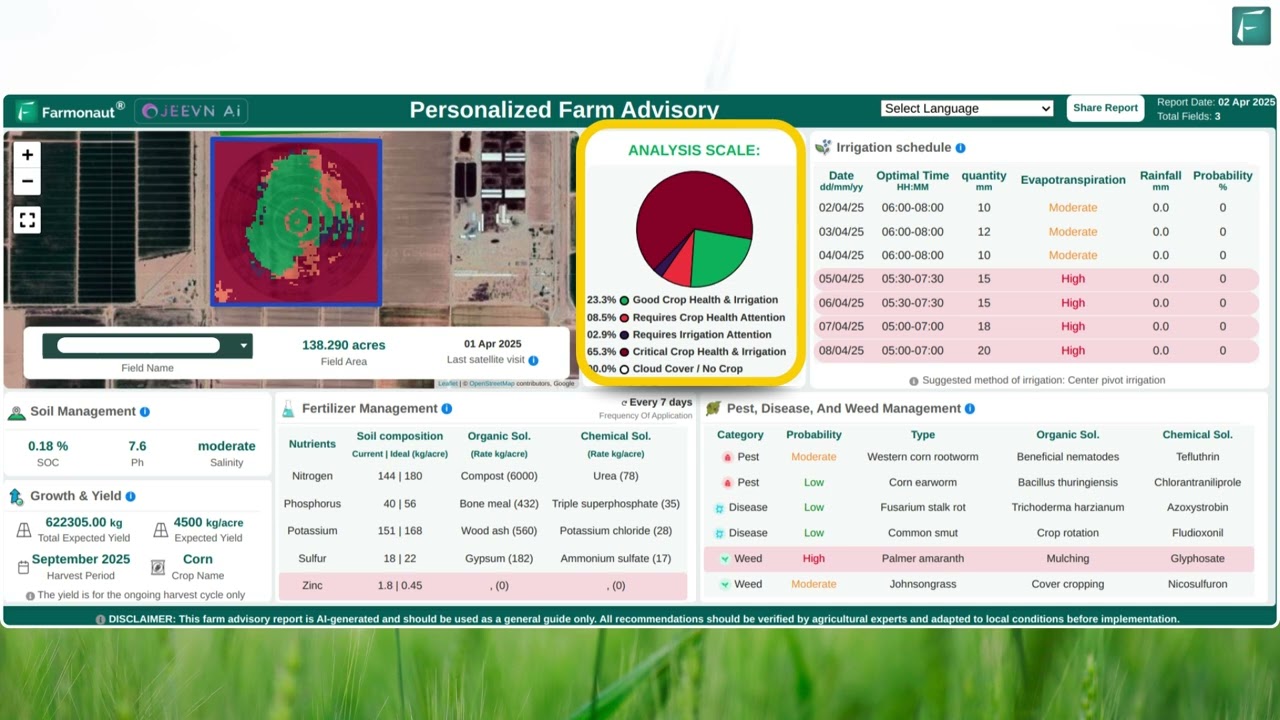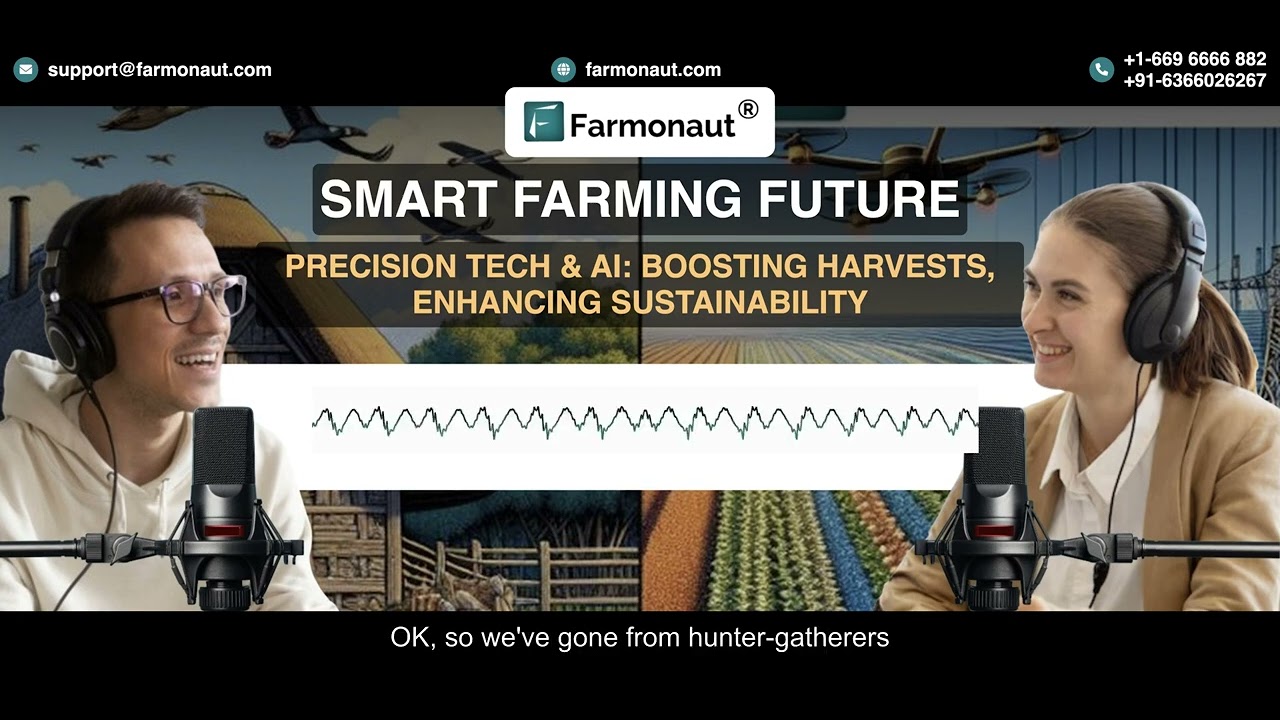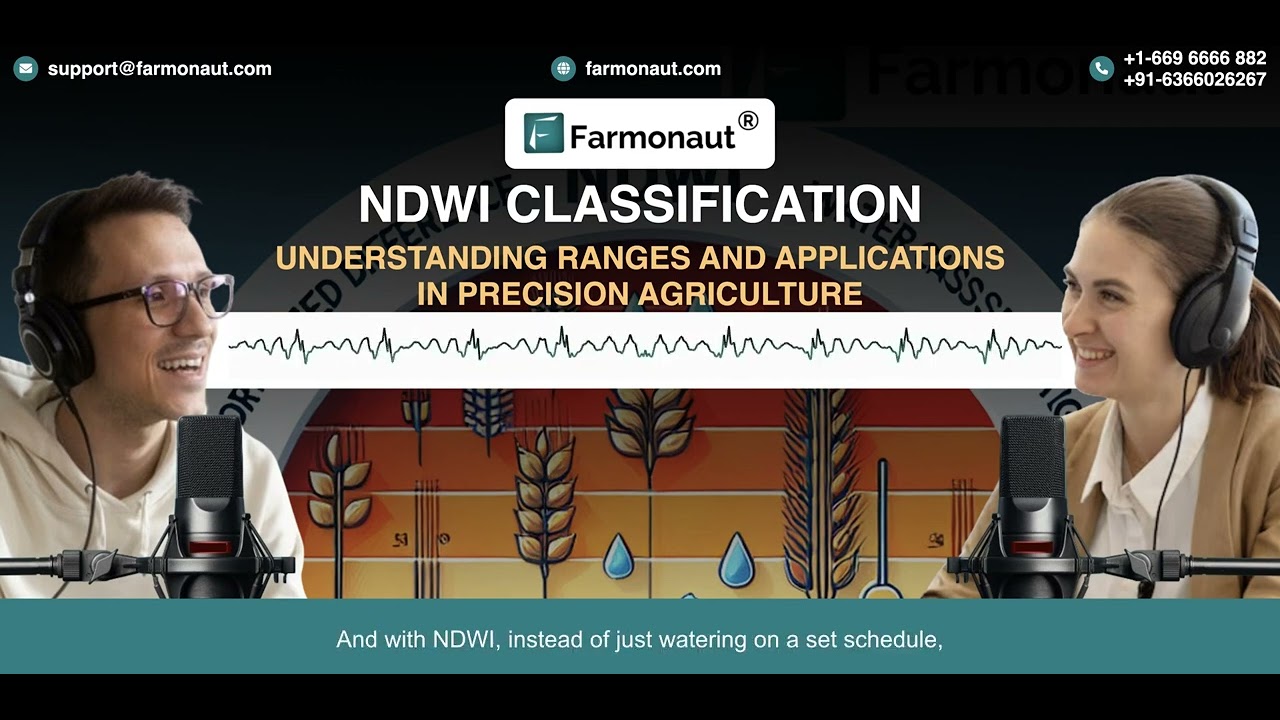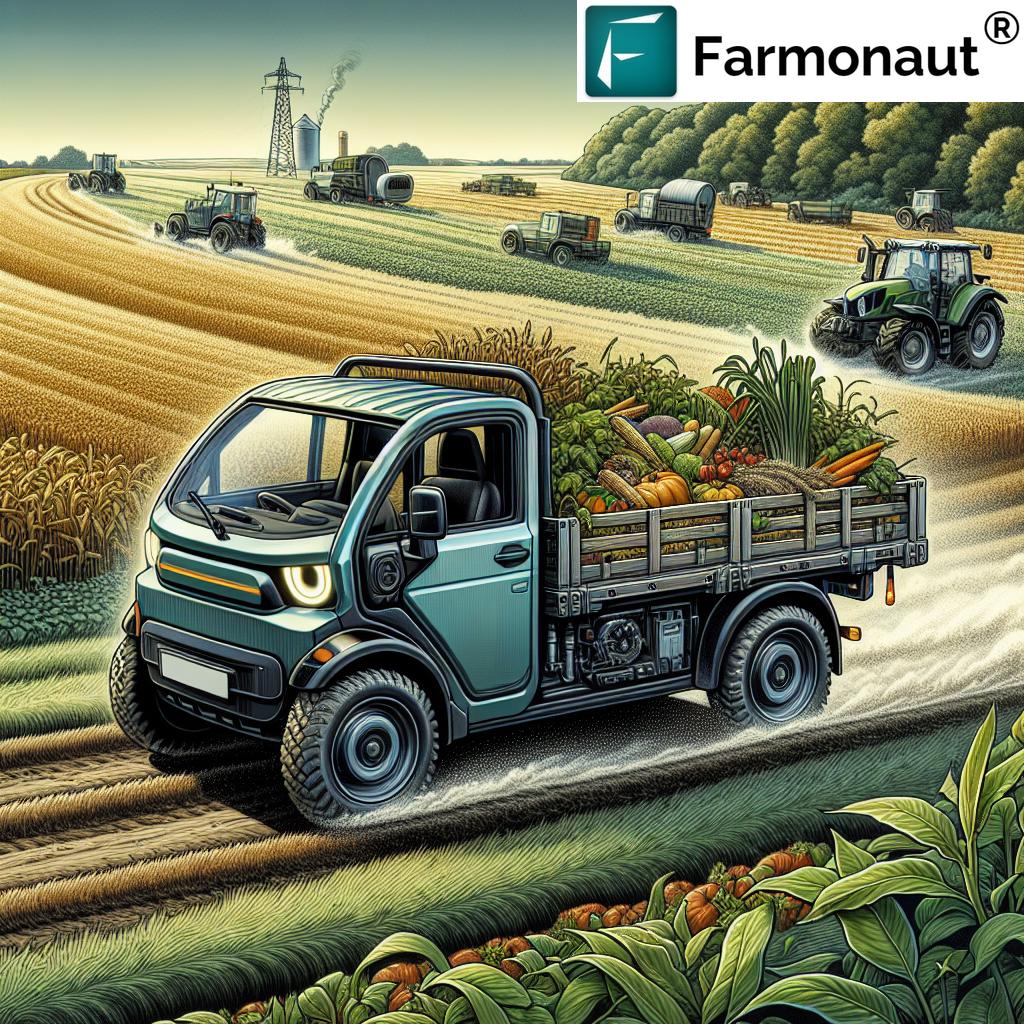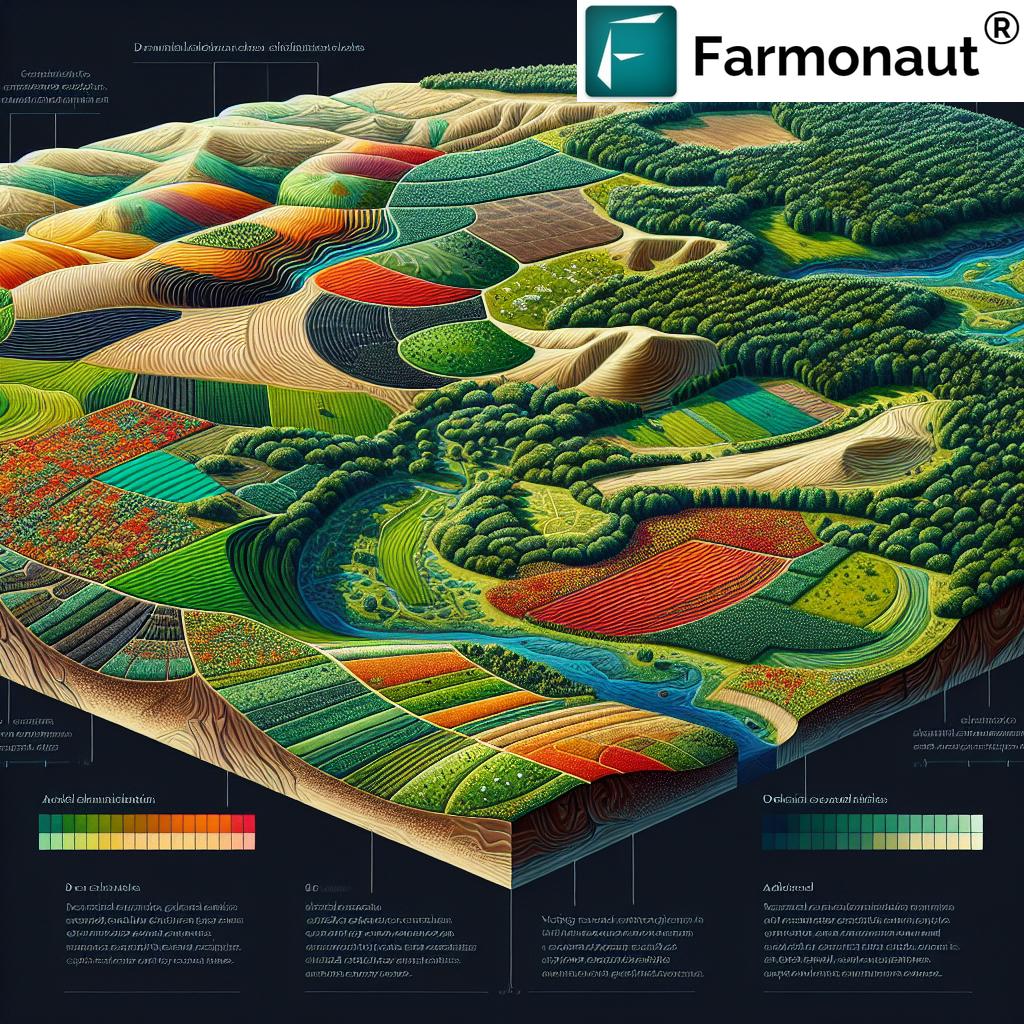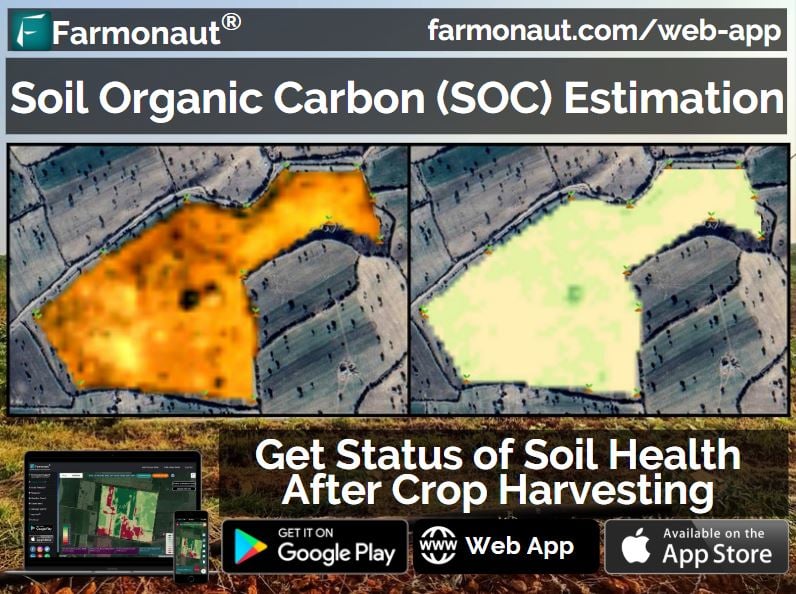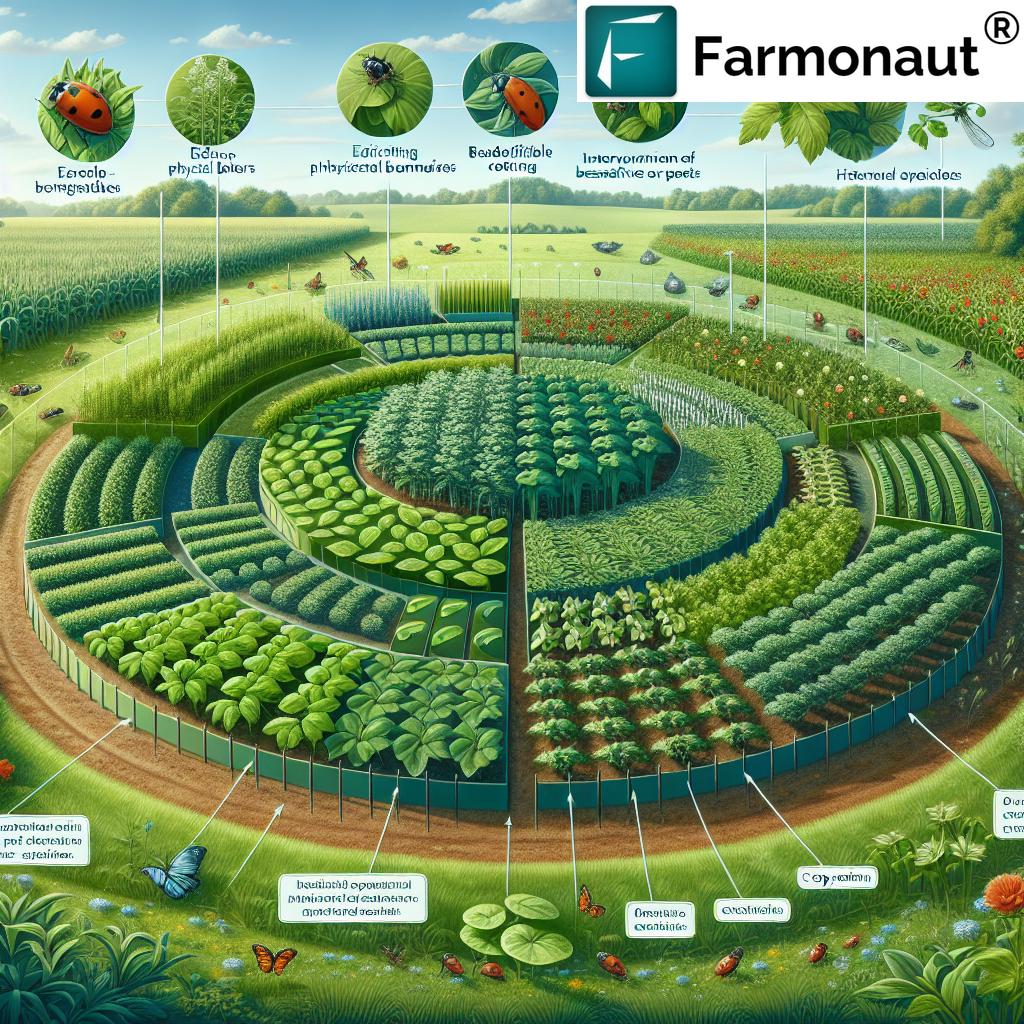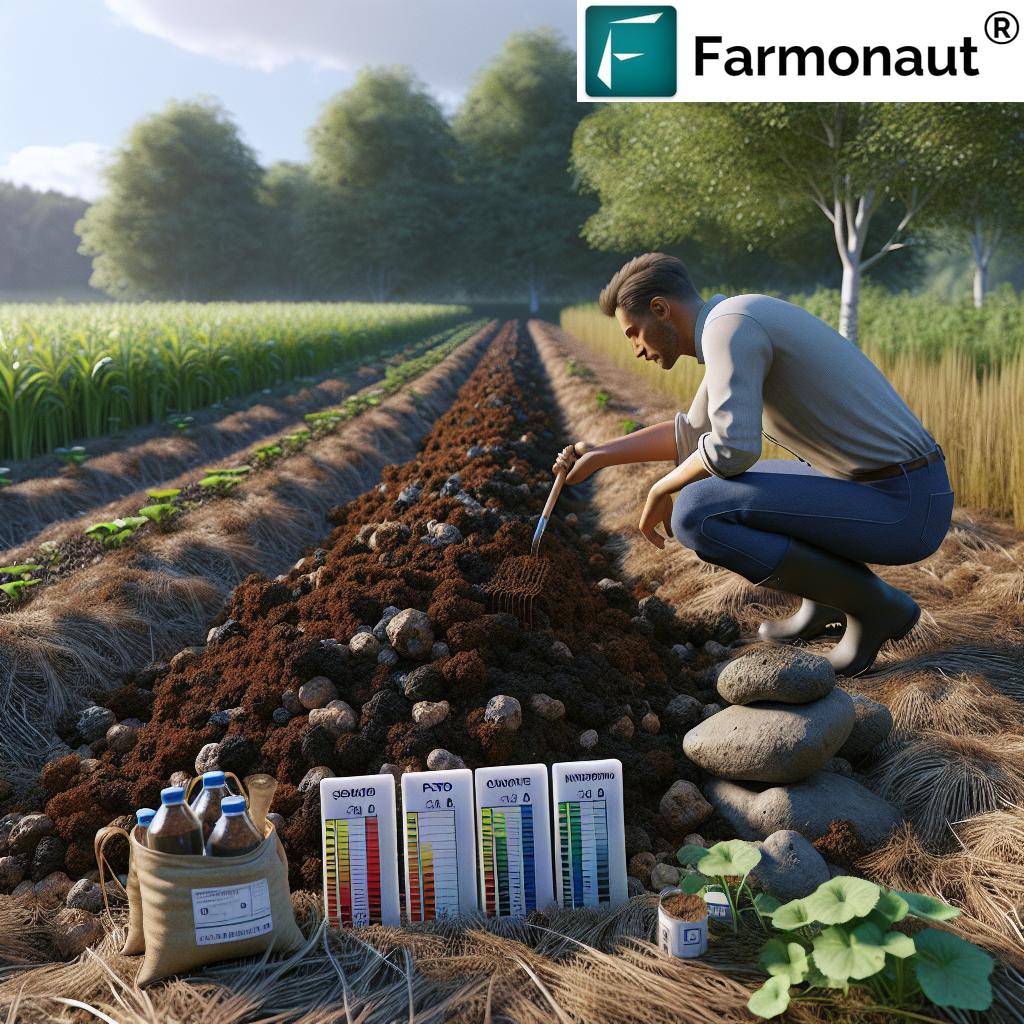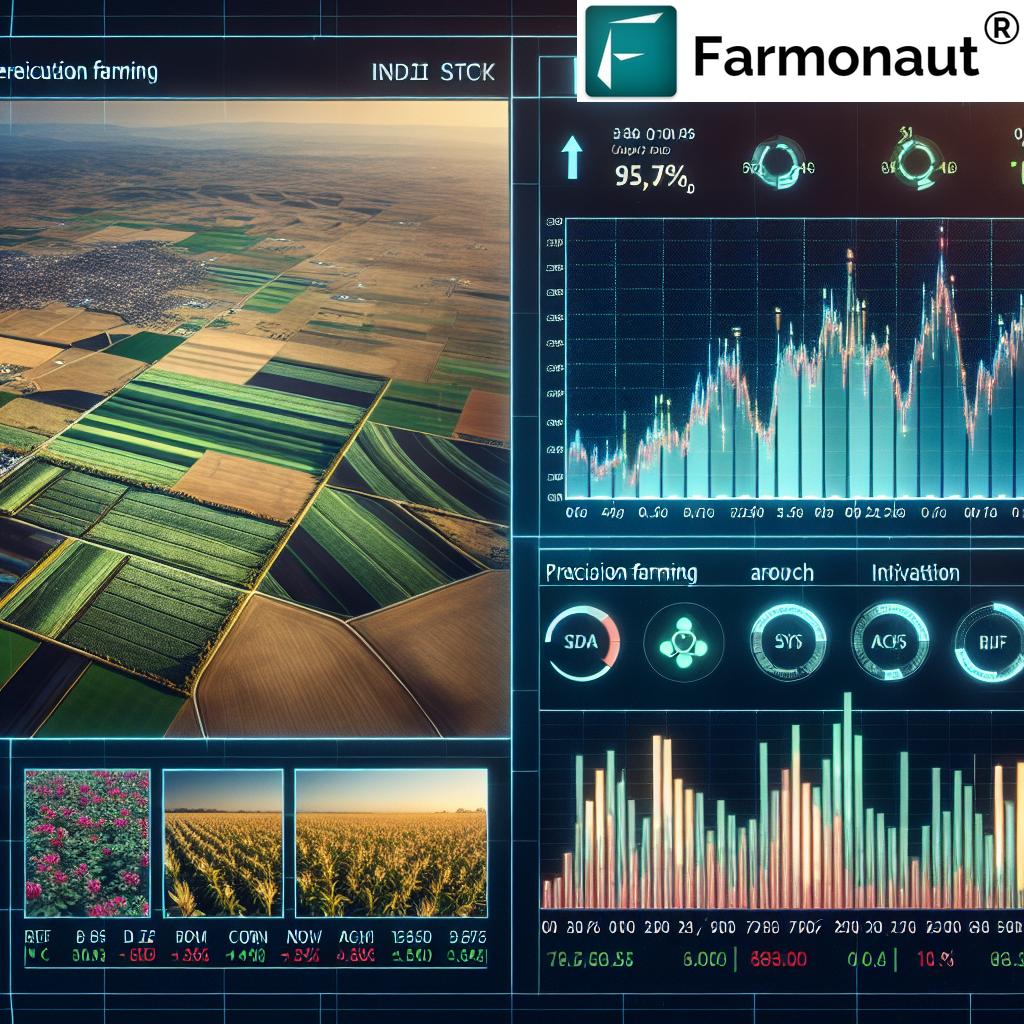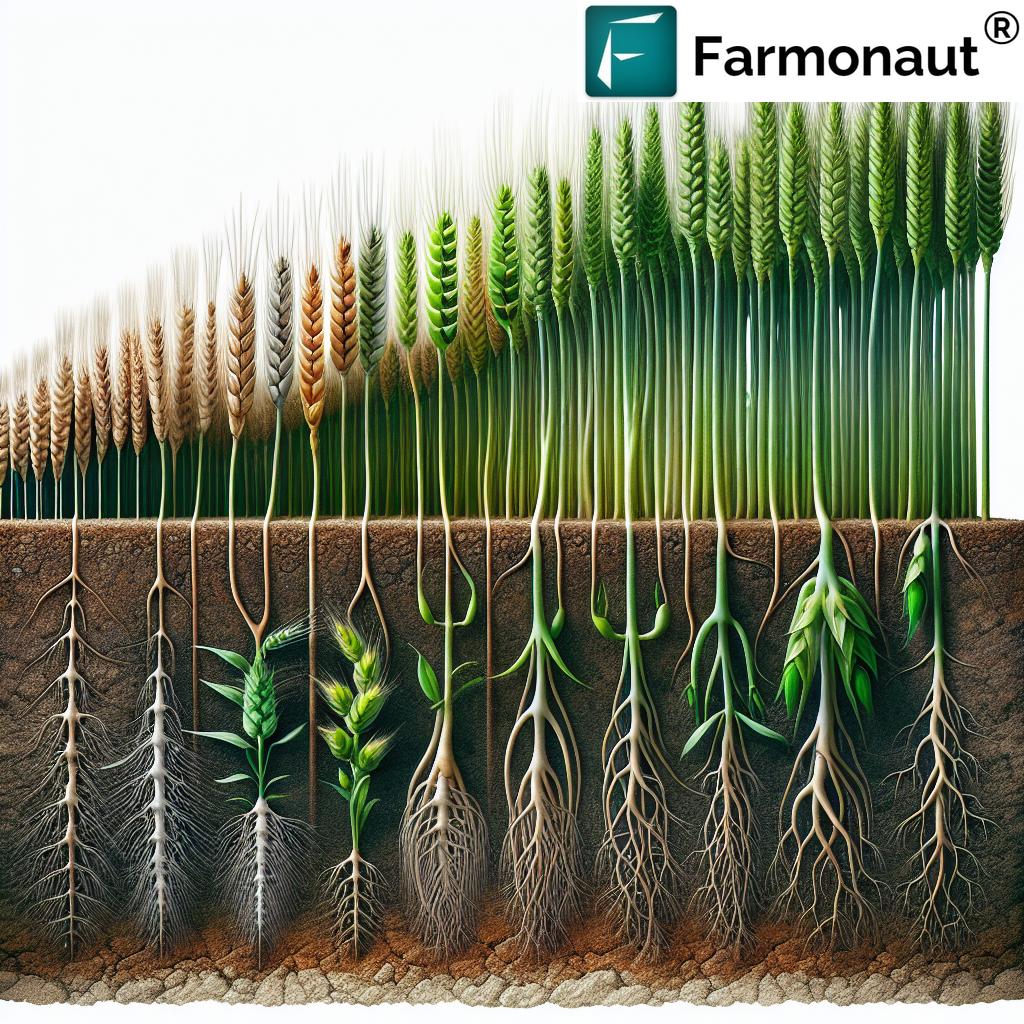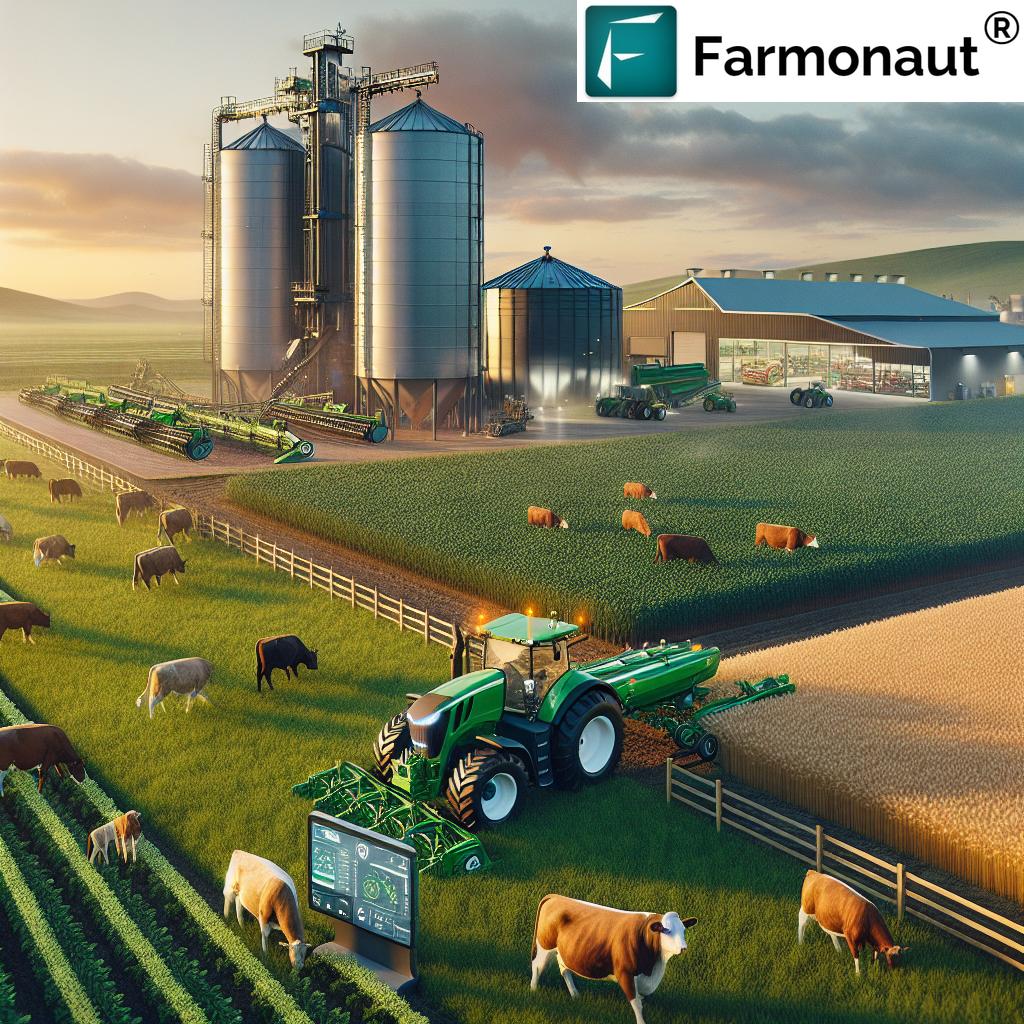Generative AI Indoor Farming: Top 2025 Agriculture Design
- Introduction: Fusion of Generative Design & AI in Agriculture
- The Evolution of AI & Generative Design in Indoor Agriculture
- What is Generative Design Indoor Farming?
- Core Benefits of Generative AI Indoor Farming Systems
- Key 2025 Technologies: Generative AI for Indoor Agriculture
- Comparative Feature Table: AI-Powered Indoor Farming vs Traditional Methods (2025)
- Agriculture Generator Design in North Carolina: Regional Impacts
- Beyond the Farm: Generative AI Expanding Indoor Agriculture Horizons
- Farmonaut: Empowering Smart Farming with Satellite & AI Solutions
- Future Trends: Indoor Farming and Generative AI by 2025 & Beyond
- Frequently Asked Questions
- Conclusion: AI-Driven Sustainable Agriculture for 2025 and Beyond
“By 2025, AI-driven indoor farms are projected to increase crop yields by up to 30% using generative design systems.”
Introduction: Fusion of Generative Design & AI in Agriculture
The past few years have witnessed the rapid advancement of artificial intelligence (AI) across countless domains. Remarkably, agriculture—one of humanity’s oldest industries—has not only followed but embraced this technological revolution. The fusion of generative design indoor farming and AI-powered systems is creating unprecedented opportunities to optimize crop yields, resource consumption, and farm sustainability, paving the way for innovative solutions to the world’s most pressing food and environmental challenges.
As the global population continues to grow and climate conditions intensify, emerging technologies like generative AI indoor farming and automated agriculture management systems are radically altering traditional farm practices. In 2025 and beyond, these technologies are expected to redefine every aspect of controlled-environment agriculture, from plant lighting, irrigation, and airflow, to yield maximization, resource optimization, and smart farm management.
In this comprehensive guide, we take an in-depth look at generative design indoor farming, exploring core benefits, technological advances, regional applications (with a focus on North Carolina), and hands-on tools like satellite-enabled farm management platforms provided by companies like Farmonaut. Discover how generative AI in agriculture is setting new benchmarks for productivity, sustainability, and food supply resilience by 2025.
The Evolution of AI & Generative Design in Indoor Agriculture
To appreciate the revolution in indoor farming, it’s crucial to understand how artificial intelligence, innovative design, and data-driven models are changing agricultural paradigms:
- Traditional indoor farms used static layouts, basic climate control, and relied heavily on human intuition, incremental improvements, and experience.
- The rise of AI, machine learning, and sensor technology enabled dynamic, real-time adjustments to lighting, water, and nutrient supply—ushering in the first wave of agriculture automation.
- Now, with generative AI for agriculture, we see algorithms that explore thousands of alternative configurations and optimize resource allocation for every farm environment—dramatically improving both yield and sustainability.
Crucially, these advances do not just apply to massive commercial vertical farms; AI-driven agricultural design systems are also empowering small and mid-size urban operations, local farms, and regions confronting climate-specific challenges like North Carolina.
What is Generative Design Indoor Farming?
Generative design indoor farming is a process that relies on AI algorithms to generate, analyze, and select the most efficient and productive indoor agriculture environments. Unlike traditional design, which often depends on fixed templates or human intuition, generative systems can process data from countless parameters, including:
- Lighting layouts, spectrum, and intensity adjustments for precise photosynthesis and energy optimization
- Airflow and humidity management, ensuring optimal CO2 levels and temperature zones for various plant species
- Intelligent irrigation, nutrient delivery, and water recycling systems
- Spatial configuration and plant placement to maximize density per square meter with minimal waste
By leveraging machine learning, these generative agriculture design systems explore thousands of possible layouts and operational strategies within moments—identifying those that maximize yield and resource efficiency for a given crop type, growth stage, and external climate conditions.
Generative design doesn’t stop at physical layout. It also integrates real-time sensor data, simulations, and environmental models to deliver continuous adaptation—meaning farms learn and self-optimize as conditions or market demands change.
How Generative Design Indoor Farming Works
- Farmers or system designers set goals and specify constraints—e.g., crop variety, available floor space, energy budget, and yield targets.
- AI-driven generative algorithms create multiple design alternatives based on parameters and input historical data or live sensor data.
- The system simulates environment, resource usage, and growth cycles for each configuration; it uses machine learning to predict outcomes like yield, energy consumption, and quality.
- Optimal solutions are selected from thousands of alternatives, providing not just a single answer but a repertoire of configurations for year-round or multi-crop cycles.
- Continuous adaptation: As the environment, market, or crops change, the system updates its models and automates adjustments—keeping the farm at peak productivity.
“Generative AI optimizes resource use in indoor agriculture, reducing water consumption by as much as 40% in advanced setups.”
Core Benefits of Generative AI Indoor Farming Systems
The impact of implementing an AI-enabled indoor agriculture design system extends far beyond mere automation. Here’s why generative AI for agriculture is a game changer for 2025 and the future of food:
- Boosted Crop Yield: By continuously optimizing every parameter, farms can achieve up to 30% more yield per square meter compared to traditional layouts.
- Resource Efficiency & Sustainability: Generative design reduces water consumption by up to 40%, slashes energy waste via smart lighting, and minimizes fertilizer/nutrient loss—essential for sustainable food production.
- Operational Cost Reduction: Automated climate control, lighting, irrigation, and robotic systems can cut labor costs and overhead by up to 25% while minimizing human error.
- Data-Driven Resilience: Continuous integration of sensor data and AI analysis means farms can anticipate and respond to threats—such as pests, disease, or supply fluctuations—faster than ever before.
- Adapts to Regional Climate & Demands: Generative models can be locally calibrated for regions like North Carolina (NC), matching specific crop types, climate patterns, and economic factors.
- Compact Urban Solutions: Smart layouts mean high-density, high-productivity food production is feasible in urban or space-constrained environments.
- Transparency & Traceability: Many AI-driven systems now offer digital logging and blockchain-based records for supply chain transparency.
Key 2025 Technologies: Generative AI for Indoor Agriculture
Let’s break down the critical innovations shaping indoor agriculture design systems in 2025:
-
Smart LED Lighting: AI systems adjust lighting spectra and intensity based on plant species and growth stage, minimizing energy while maximizing photosynthesis and taste.

- Automated Climate & Environmental Controls: AI-driven HVAC, ventilation, misting, and CO2 management keep each zone at optimal temperature, humidity, and airflow for high-quality produce.
- Sensor-Integrated Monitoring & IoT: Environmental and crop sensors feed live data into generative design systems, powering actionable insights for every aspect of farm management.
- Dynamic Irrigation & Nutrient Delivery: AI tools modulate nutrient dosing and water cycles based on real-time growth data—drastically reducing resource waste.
- Plant Growth Simulations: Virtual models forecast plant development, detect deficiencies, prevent disease, and schedule harvesting—all powered by generative AI.
- Advanced Robotics & Automation: Robotic arms and conveyors, programmed via generative layouts, enable high-density indoor farms with minimal labor input.
-
Blockchain-Based Traceability: Ensures transparency from farm to fork, and reduces risk across the food supply chain.
Explore complete blockchain-based product traceability tools by Farmonaut for next-gen supply chain authenticity. -
AI-Enabled Satellite & Remote Sensing: Companies such as Farmonaut combine satellite monitoring with AI-driven advisory tools for large-scale, location-specific optimization.
Farmonaut’s integrated agriculture advisory platform delivers real-time, satellite-based insights with AI advisory systems—empowering all types of farms with data-driven decision making.
Comparative Feature Table: AI-Powered Indoor Farming vs Traditional Methods (2025)
| Farming Method | Estimated Crop Yield Increase (%) | Resource Efficiency (Water/Land Use) | Energy Consumption (kWh/sqm) | AI Automation Level | Operational Cost Reduction (%) | Sustainability Score (1-10) |
|---|---|---|---|---|---|---|
| AI-Driven Generative Design Farm (2025) | Up to 30% | 40% less water, high land-use efficiency | 8–15 kWh/sqm (optimized) | Full Automation (dynamic, adaptive) | Up to 25% | 9–10 |
| Traditional Indoor Farm | Baseline | Conventional (higher waste) | 15–25 kWh/sqm | Partial Automation (manual interventions) | Up to 10% | 5–6 |
*Estimated values based on 2025 industry benchmarks. Actual values may vary by region, climate, crop type, and technology stack.
Agriculture Generator Design in North Carolina: Regional Impacts
When it comes to generative design indoor farming in the United States, few regions reflect both the opportunity and the necessity for innovation quite like North Carolina (NC). As a critical economic hub for agriculture, NC faces unique climate variability, market demands, and resource challenges.
Smart agriculture generator design NC programs are increasingly:
- Localizing generative design models to NC’s specific climate patterns and crop varieties (e.g., berries, leafy greens, heritage vegetables).
- Optimizing layouts and operational cycles for local energy prices, market trends, and supply chain logistics.
- Strengthening resilience to hurricanes, droughts, and other climate risks endemic to the southeast US.
- Reducing regional water and energy consumption—a major concern as populations grow and demands intensify.
Through smart design and AI-powered indoor agriculture design systems, farmers and agri-businesses in North Carolina are better equipped to not only resist external shocks and supply chain disruptions, but to compete in global markets—future-proofing NC’s food economy by 2025.
Want to monitor large-scale farms, resource use, and environmental impact across vast NC acreage? Farmonaut’s Large-Scale Farm Management platform offers satellite-driven, real-time monitoring and AI-based crop health analysis—delivering operational efficiency right to your desktop or device.
Beyond the Farm: Generative AI Expanding Indoor Agriculture Horizons
Generative AI isn’t just optimizing farm layouts—it’s revolutionizing every process along the indoor agriculture value chain:
- Predictive Analytics: AI models recognize patterns in climate, pest, and growth data to predict disease outbreaks or nutrient deficiencies before symptoms appear.
- Automated Harvesting & Plant Management: Robotics and automation—guided by AI-generated designs—ensure crops are picked at their freshest and reduce labor dependency.
- Supply Chain & Traceability: Blockchain and digital recordkeeping enable “from-seed-to-shelf” supply chain transparency and authentication.
-
Environmental Monitoring & Sustainability: Real-time monitoring ensures carbon emissions, water usage, and environmental impact are tracked and minimized.
Use the Carbon Footprinting Tool by Farmonaut for actionable data and compliance support.
The synergy of AI, generative design, satellite imaging, blockchain, and IoT devices means indoor farming in 2025 will be not just more productive, but also more resilient, transparent, and environmentally responsible.
Looking to maximize transport, fleet efficiency, and logistics for your indoor farm operation? Farmonaut’s Fleet Management Solution delivers GPS-enabled, real-time fleet tracking and resource optimization—making operational cost reduction a reality for farms of any size.
Farmonaut: Empowering Smart Farming with Satellite & AI Solutions
As we look toward 2025 and beyond, it’s clear the future of indoor agriculture hinges on seamless integration of data, algorithms, and real-time management tools. We at Farmonaut are committed to making satellite-driven insights accessible for everyone—from individual growers to entire regional farm economies.
- Our platform delivers real-time monitoring via satellite and advanced AI advisory systems, enabling instant visibility into crop health (using NDVI), soil moisture, nutrient status, and climate variability.
-
Farmonaut’s ecosystem includes support for web, Android, and iOS app users, as well as powerful APIs for custom integrations.
Get started:


-
Our API allows advanced users and developers to integrate satellite weather, climate, and advisory technologies right into their existing agriculture design systems.
Learn more: Farmonaut API | API Developer Docs - Environmental Intelligence: We also support environmental impact tracking, carbon monitoring, and sustainability analytics for modern agriculture.
- Affordable Subscriptions: We democratize satellite-powered smart farming with subscription-based tools for users of all sizes—see the pricing table below.
Satellite-driven, generative AI-enabled systems are no longer exclusive to giant enterprises—with Farmonaut, any farmer or agribusiness can practice data-first, high-efficiency, and transparent indoor agriculture.
Find out more about crop loan & insurance tools for streamlined financing and reduced fraud—supported by real-time satellite verification.
Future Trends: Indoor Farming and Generative AI by 2025 & Beyond
The trajectory for indoor agriculture and generative AI for agriculture in 2025 reveals several pivotal trends:
- Decentralized, Local Production: AI-designed urban farms bring food production closer to demand, reducing transportation emissions.
- Hyper-Personalized Crop Management: Generative AI creates “one-field, one-farm” solutions—each tailored for specific market, climate, or environmental need.
- Complete Automation: New robotics, guided by real-time AI insights, can automate everything from planting to harvest, disinfecting, and transport.
- Sustainability Regulation & Compliance: As governments intensify climate policy, AI models and generative design compliance tools (like Farmonaut’s) will be fundamental.
- Data-Fueled Global Food Security: Predictive AI, big data, and cross-regional generative agriculture design will enable rapid response to climate shocks or food shortages.
- Broader Accessible Technology: With platforms and subscription models like those offered by Farmonaut, precision agriculture and generative indoor design systems will be within reach of smallholder and family farms.
The era of trial-and-error farming is over—by 2025, controlled, AI-optimized environments will define food production for a changing world.
Frequently Asked Questions
-
What is generative design in the context of indoor farming?
It’s the application of AI algorithms and machine learning to generate, simulate, and optimize multiple indoor farm layouts, resource allocations, and environment settings for maximum yield and sustainability. -
How does generative AI in agriculture benefit resource management?
By using real-time sensor data and predictive models, generative AI automates adjustments to lighting, climate, irrigation, and nutrients—cutting water use by up to 40% and reducing energy waste significantly. -
Is AI-driven indoor farming only for large-scale commercial farms?
No; with modern apps and tools (like those from Farmonaut), even micro and urban farms, as well as medium farms in regions like North Carolina, can take advantage of AI-based indoor agriculture design systems to remain competitive and sustainable. -
What sets Farmonaut apart in the smart indoor farming space?
We at Farmonaut utilize satellite imagery, advanced AI advisory systems, real-time monitoring, blockchain-based traceability, and resource tools within one platform—with flexible subscriptions and API support for users of all sizes. -
How do I start integrating these technologies on my farm?
Begin by evaluating existing farm data, resource use, and goals. From there, use solutions such as Farmonaut Apps for monitoring, or tap into APIs for custom integration of satellite and AI-driven insights.
Conclusion: AI-Driven Sustainable Agriculture for 2025 and Beyond
Generative design indoor farming stands as a paradigm shift—combining the rapid advances of AI, machine learning, and sensor integration to create indoor agriculture design systems that adapt, optimize, and sustain future food production. By 2025, these systems will form the cornerstone of local and global food security, environmental stewardship, and economic stability.
For regions like North Carolina, the adoption of agriculture generator design NC primes local farms for resilience and growth amid climate volatility and increasing global demands. Whether it’s resource optimization, yield increase, or cutting-edge traceability via blockchain, generative AI for agriculture delivers on all fronts.
We at Farmonaut believe the future of farming is data-driven, sustainable, and accessible. By leveraging real-time, satellite-based intelligence and generative design insights, together, we can meet the world’s escalating food and environmental challenges—one smart farm at a time.
Ready to take the next step? Harness the power of satellite and AI in agriculture—explore Farmonaut’s smart agriculture and forest advisory platform and experience a revolution in generative design indoor farming.



